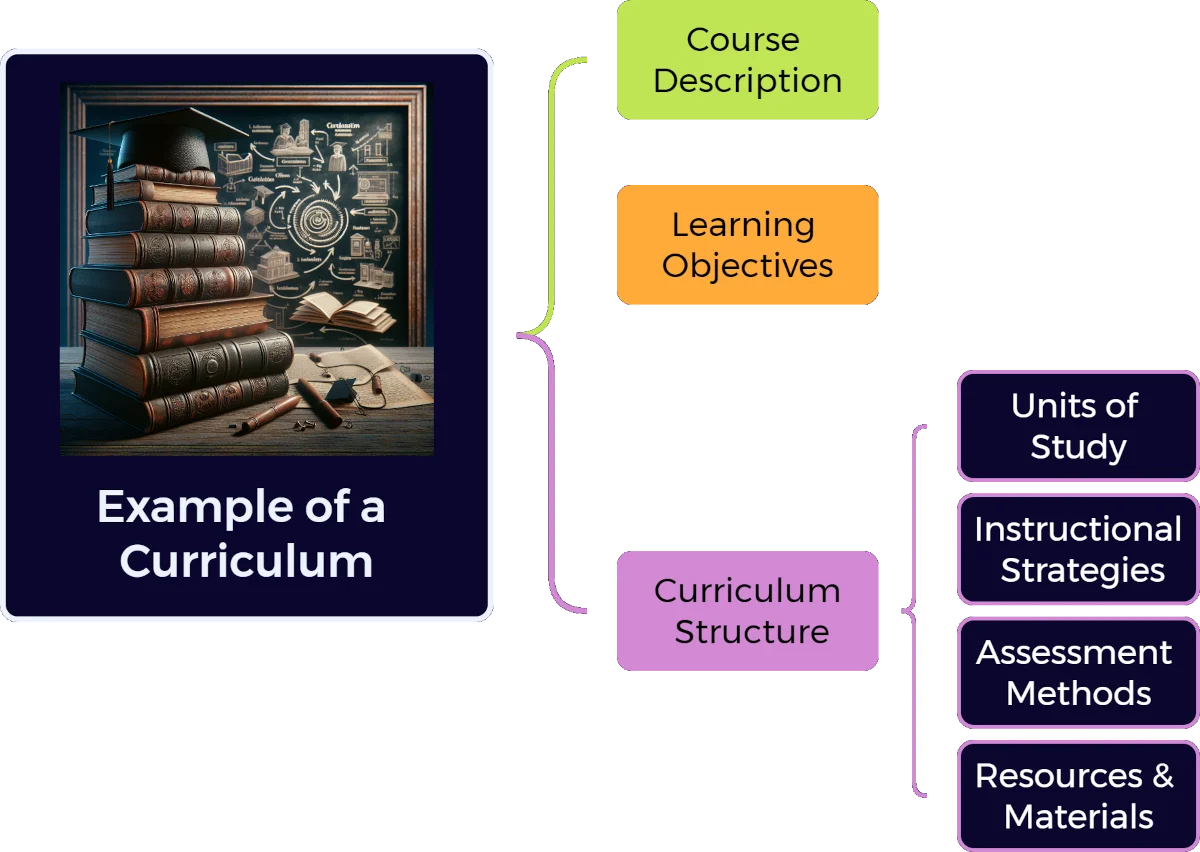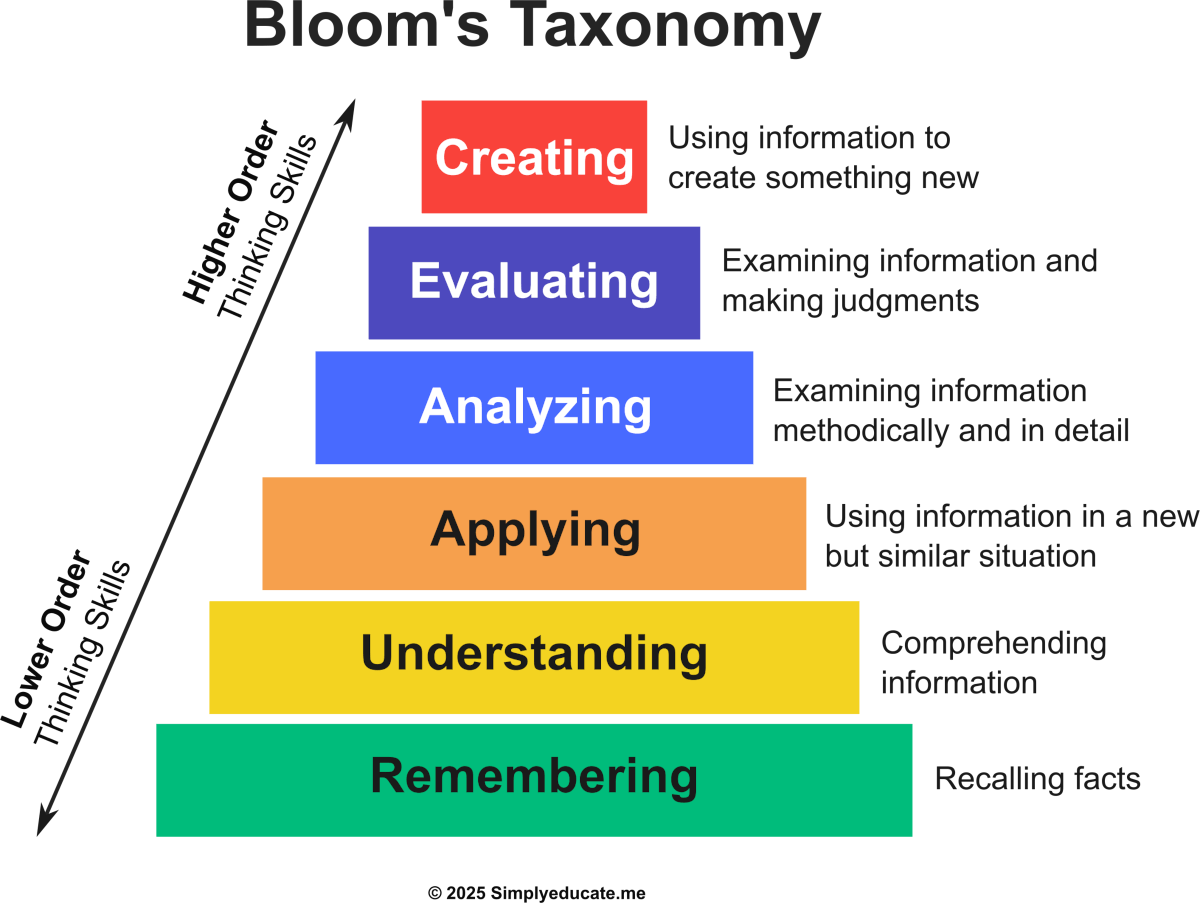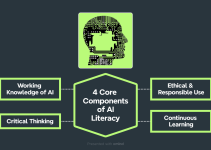
This article provides an example of a curriculum, specifically one focused on environmental science.
Before we proceed to the section on the example curriculum, I will first define what a curriculum is, how theories can aid in its effective delivery, and the key components of a curriculum. This foundation will enhance your understanding of how the example came into being.
If you are already familiar with what a curriculum is and how theories guide its development, you may jump right to the example of a curriculum using the table of contents.
Table of Contents
What is a Curriculum?
A curriculum, in the context of education, is a structured framework that outlines the content, topics, and skills to be taught in a specific course or program. It serves as a roadmap for educators, guiding them on what to teach, and is designed to facilitate learning by providing a coherent progression of concepts and knowledge.
A curriculum is a structured framework that outlines the content, topics, and skills to be taught in a specific course or program.
A curriculum, to be effective, integrates theories on how students learn. This integration allows educators to tailor their teaching methods to meet diverse learning needs and adapt to various educational contexts.
I will discuss how the different educational theories can be synergistically integrated into a single curriculum in the next section.
How are Theories of Education Infused in the Curriculum?
Integrating educational theories into a curriculum is essential for creating a coherent progression that facilitates effective learning. The application of these theories helps frame the way educators construct learning experiences, ensuring they are meaningful and appropriate for students’ developmental stages and needs.
For example, if we apply constructivism in the development of curriculum for a specific subject, we need to consider Jean Piaget and Lev Vygotsky advocacy that learners construct knowledge based on experiences and interactions. Thus, a curriculum should be designed to build on prior knowledge, enabling learners to connect new information to what they already understand.
Further, a curriculum that incorporates Bloom’s Taxonomy allows educators to structure learning objectives and assessments in a way that gradually increases cognitive complexity: from lower-order thinking (remembering, understanding) to higher-order thinking (applying, analyzing, evaluating, and creating).

If we want to emphasize Albert Bandura’s social learning theory that highlights the importance of observation, imitation, and modeling in learning, educators can facilitate a learning environment where students learn from one another. Through discussion and practice, the learners are able to reinforce concepts. Cooperative learning with diverse perspectives takes place.
Integrating educational theories into a curriculum enhances coherent progression by ensuring that each element of learning builds upon the previous one. It supports various learning styles and approaches, accommodating the diverse needs of students.
By applying these theories, educators can create an engaging, thoughtful, and effective educational experience that encourages deeper understanding and lasting knowledge. Find one or several theories that you can blend together to design a curriculum appropriate for your specific education context or level of education. There is no such thing as one size fits all when designing the appropriate curriculum to suit the needs of your learners.
Related Post: Theories of Education: 10 Groundbreaking Ideas That Shaped Learners Around the World
5 Key Components of a Curriculum
The key components of a curriculum include learning objectives, content and subject matter, instructional strategies, assessment methods, and resources and materials. A curriculum developer can make an outline of the key components and from there, go into details. We will see how this works in more detail in the example of a curriculum in the last section.
Each component has features that must be observed as follows:
1. Learning Objectives
Objectives are specific, measurable statements that outline the desired learning outcomes or goals of a particular process or activity. They serve as clear targets that guide planning, implementation, and evaluation across various contexts, including education, business, project management, and personal development.
In educational settings, learning objectives state the specific knowledge, skills, and attributes (KSA) students are expected to achieve by the end of a course or program. They help shape the curriculum and instructional strategies, providing both teachers and students with a clear understanding of what is expected.
For instance, effective learning objectives are often formulated using the SMART criteria, meaning they are Specific, Measurable, Achievable, Relevant, and Time-bound. Here are five examples of SMART objectives encompassing different disciplines:
a. Education
Learning Objectives: At the end of the semester, students should be able to:
- read and analyze three novels, and
- score at least 80% on comprehension tests.
These objectives follow the SMART form because the objectives are:
Specific: Students will read and analyze three novels.
Measurable: Students will score at least 80% on comprehension tests.
Achievable: Given the current curriculum, this is realistic.
Relevant: Enhanced reading skills are crucial for academic success.
Time-bound: This will be achieved by the end of the semester.
b. Health and Fitness
Objective: At the end of the three month training sessions which will be held twice a week, the athletes shall be able to complete a 5K run in under 30 minutes.
Specific: Participants will complete a 5K run.
Measurable: Completion time will be under 30 minutes.
Achievable: Training sessions will be held twice a week.
Relevant: This will improve overall health and fitness.
Time-bound: The goal will be reached in three months.
c. Business
Objective: Within the next six months, the business shall be able to increase customer satisfaction score to an average of 90% on customer surveys with staff training and improved service protocols.
Specific: Increase the customer satisfaction score.
Measurable: Achieve an average score of 90% on customer surveys.
Achievable: With staff training and improved service protocols.
Relevant: Higher satisfaction leads to customer retention.
Time-bound: Target to reach this goal within six months.
d. Personal Development
Objective: At the end of four months, I should be able to create three social media campaigns by enrolling myself in online courses and workshops on digital marketing.
Specific: Learn to create social media campaigns.
Measurable: Produce at least three campaigns.
Achievable: Online courses and workshops will facilitate learning.
Relevant: This skill is relevant for career advancement.
Time-bound: Completion in four months.
5. Technology
Objective: At the end of eight weeks, computer programming students should be able to obtain a certificate by:
- completing an online Python course, and
- finishing all course projects.
Specific: Complete an online Python course.
Measurable: Finish all course projects and achieve a certificate.
Achievable: Course deadlines are designed to be manageable.
Relevant: Coding is essential for a career in computer technology.
Time-bound: Complete the course in eight weeks.
I detailed the discussion on objectives because this is the most crucial aspect of designing a curriculum. If the objectives of your course while designing a curriculum are not clear, then the succeeding steps will not work optimally as expected because expectations are not clear.
2. Content and Subject Matter
The topics, themes, and skills that will be covered throughout the course, including readings, assignments, and any supplementary materials. These are the main areas of focus within the course. They are often organized into units or modules, each covering specific themes or concepts.
3. Instructional Strategies
Instructional strategies include the teaching methods and approaches that educators will employ to deliver the content effectively. This may include lectures, discussions, and hands-on activities.
Related Post: Critical Thinking Exercises: 10 Best Ones
4. Assessment Methods
Assessment methods include tools and techniques used to evaluate student learning and understanding, including quizzes, exams, projects, and presentations.
5. Resources and Materials
Resources and materials cover a list of textbooks, technology, apps, and other materials to support learning and teaching. In the age of AI, many other useful tools arise that can significantly help in the delivery of expected outcomes in a course or lesson.
AI applications have emerged as valuable resources for enhancing curriculum design and enriching learning experiences. Platforms like Edutopia provide educators with evidence-based strategies, while MIT’s RAISE initiative empowers educators to use AI responsibly and effectively. These resources highlight innovative teaching methods and offer practical solutions for integrating technology into classrooms.
Additionally, tools from organizations such as the National FFA and literature review platforms streamline lesson planning and academic research, making it easier for educators to adopt AI in their teaching practices.
Further, educators can personalize learning experiences and improve student engagement.
For instance, AI can assist in identifying learning disabilities and tailoring instructional content to address diverse student needs. With the support of curated resources from various initiatives, educators can better leverage AI tools to advance their curricular goals.
By adopting these technologies, educators can foster a more interactive and effective learning environment that meets the demands of the 21st century.
A well-designed curriculum is essential for creating a meaningful educational experience, providing consistency and clarity for both educators and students. It can vary widely depending on the educational level (e.g., primary, secondary, higher education) and subject matter.
Now, since you are armed with a better understanding of the important components, how theories can be integrated in the curriculum design, and you are already familiar with the definition of the curriculum, here’s an example of a curriculum outline on environmental science.
Example of a Curriculum on Environmental Science
Here’s a comprehensive example of a curriculum for a college-level Environmental Science course. This structure includes key units, learning objectives, and assessments.
Curriculum Outline for a College-Level Environmental Science Course
Course Title: Introduction to Environmental Science
Course Code: ENV 101
Term: First Semester
Credit Hours: 3
Course Description
This course provides an interdisciplinary overview of environmental science, focusing on understanding ecological systems, human impacts on the environment, and approaches to sustainability. Students will engage in critical thinking about pressing environmental issues and explore potential solutions.
Learning Objectives
By the end of this course, students will be able to:
- Evaluate the fundamental concepts of ecology, environmental science, and sustainability.
- Analyze the effects of human activity on natural systems and assess environmental policies.
- Conduct research on environmental issues, employing scientific methods and critical analysis.
- Propose sustainable solutions to real-world environmental problems.
Curriculum Structure
1. Units of Study
Unit 1: Foundations of Environmental Science
Topics: Introduction to environmental science, interdisciplinary nature, key concepts.
Readings: Chapters from Environmental Science: A Global Concern.
Activities: Group discussions on current environmental events.
Unit 2: Ecosystems and Biodiversity
Topics: Structure and function of ecosystems, biodiversity significance, threats to biodiversity.
Readings: Selected articles on ecosystem services and case studies of endangered species.
Lab Work: Field trip to local ecosystems, biodiversity assessment.
Unit 3: Human Population Dynamics
Topics: Population growth models, urbanization, and sustainability challenges.
Readings: Research papers on population studies and demographics.
Assignment: Create a population projection for a local area using simulation software.
Unit 4: Resources and Energy
Topics: Natural resources, renewable vs. non-renewable energy, energy consumption trends.
Readings: Chapters from Energy for Future Presidents by Richard A. Muller.
Project: Conduct an energy audit of a residential or commercial site.
Unit 5: Pollution and Environmental Health
Topics: Types of pollution, hazardous waste management, public health implications.
Readings: Current research on air quality and its impact on health.
Lab Work: Analyze water samples for pollutants.
Unit 6: Climate Change and Global Sustainability
Topics: Climate change science, global warming effects, mitigation strategies.
Readings: Reports from the Intergovernmental Panel on Climate Change (IPCC) such as COP29.
Group Project: Develop a local climate action plan addressing mitigation and adaptation strategies.
2. Instructional Strategies
Lectures: Provide foundational knowledge and introduce key concepts using multimedia presentations.
Discussions: Facilitate classroom dialogues to encourage student participation and critical thinking on contemporary environmental issues.
Hands-on Activities: Utilize case studies, field trips, and labs to apply theoretical knowledge to real-world scenarios.
Collaborative Projects: Encourage teamwork through group projects, allowing students to learn from diverse perspectives and enhance interpersonal skills.
Technology Integration: Incorporate online resources, simulation software, and environmental databases to enhance research capabilities and learning engagement.
3. Assessment Methods
Participation: Active involvement in class discussions and group work.
Quizzes: Unit-based quizzes to assess comprehension of key concepts.
Research Paper: A paper analyzing a specific environmental issue, incorporating both scientific literature and policy analysis.
Final Exam: Comprehensive exam covering all course material, including short answers and essays.
4. Resources
Primary Texts
Cunningham, W. P., Cunningham, M. A., & Saigo, B. W. (2001). Environmental science: A global concern (Vol. 412). New York: McGraw-Hill.
Muller, R. A. (2012). Energy for future presidents: the science behind the headlines. WW Norton & Company.
Supplementary Materials
Access to online databases, films related to environmental topics, and case studies.
This curriculum structure provides a roadmap for teaching a thorough and engaging Environmental Science course, facilitating both knowledge acquisition and critical thinking among students.
You may download this example on curriculum as your reference in PDF format below.
I hope you find this article useful in designing the curriculum for the course you are tasked to work on.
FAQ
Q1: What is a curriculum?
A curriculum is a structured framework that outlines the content, topics, and skills to be taught in a course or program. It serves as a roadmap for educators to guide teaching and facilitate progressive learning.
Q2: How are theories of education infused in a curriculum?
Educational theories such as constructivism, Bloom’s Taxonomy, and social learning theory shape curriculum design. They ensure that teaching methods, learning objectives, and assessments match students’ developmental needs and promote meaningful learning.
Q3: What are the key components of a curriculum?
The main components of a curriculum include:
- Learning Objectives
- Content and Subject Matter
- Instructional Strategies
- Assessment Methods
- Resources and Materials
Q4: Why are learning objectives important in curriculum design?
Learning objectives provide clear, measurable targets for students and educators. They ensure that lessons are aligned with desired outcomes and help evaluate whether students have achieved expected skills and knowledge.
Q5: How can technology and AI support curriculum development?
Technology and AI tools enhance learning by offering personalized experiences, assisting in identifying student needs, and providing resources such as simulation software, online databases, and interactive activities.
Q6: Can you give an example of a curriculum in environmental science?
Yes. An example is a college-level “Introduction to Environmental Science” course, which covers units such as ecosystems, human population dynamics, resources and energy, pollution, and climate change, supported by readings, fieldwork, and projects.


